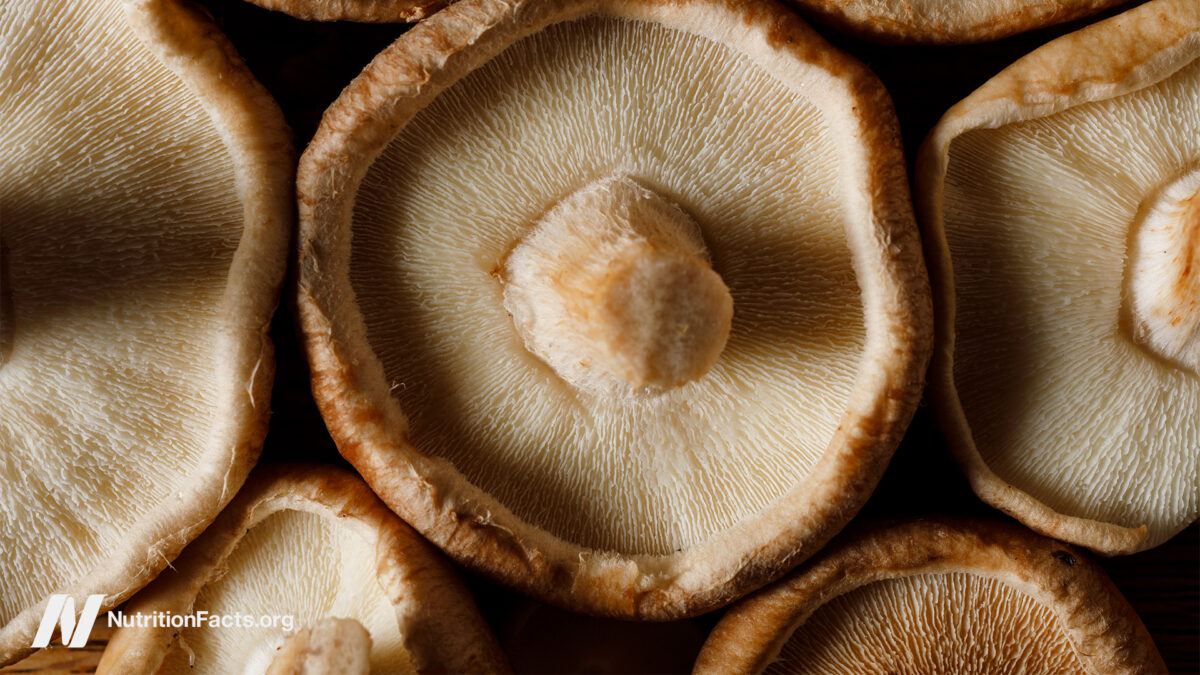Let Go of Harmful Ideas About Food
Not everything you’ve been taught about health and eating is true or helpful. Jenna Hollenstein on discovering what foods work for you. The post Let Go of Harmful Ideas About Food appeared first on Lion’s Roar.

Try to imagine that foods are neither good nor bad. Carrot is as perfect as carrot cake. Gummy bear is no other than avocado, and broccoli is no other than Wonder Bread. It’s tricky to have that mindset, right?
The Buddhist concept of nonduality teaches us that there’s no inherent separation between seeming dichotomies that shape our perception of reality, such as self and other, or mind and body. As meditation practitioners, we apply nondualistic thinking to complex subjects like strong emotions, identity, and thought itself. Yet many of us find it difficult to extend this contemplation to the food we eat.
Part of the culture we live in—what folks in my field call the “diet culture”—tells us that there are good foods and bad. Good foods are low in calories and high in nutrients, while bad foods are the reverse. Eating good foods leads to well-being, fitness, thinness, and virtue, while bad foods portend ill health, weight gain, and poor quality of life. With those messages, why wouldn’t we think dualistically about how we feed ourselves?
“A nondualistic approach to food might allow us to discover the bliss of a Greek salad with French fries or to fully enjoy a movie with our favorite candy and popcorn without recrimination.”
Our dualistic thoughts about foods (and the behaviors that stem from them) reflect our hopes and fears. We wish for a long, happy life—to feel well, to look well, to belong, to be loved. We fear exclusion, pain, illness, disease, and death. We also may fear fatness, the experience of pleasure, and our own desires. Dualistic thinking might offer an illusion of safety, but it grossly oversimplifies the true nature of food.
If you recall, there was a time when we demonized fat. In the eighties and nineties, we thought the fat in our food increased the fat on our bodies, so we removed the fat from dairy, snacks, and basically everything, and we placed a “health halo” on foods that were naturally low-fat or fat-free. What we didn’t realize was that removing the fat removed satisfaction, caused us to eat more to approximate satisfaction, and distorted our relationship with satiety and eating in general. Eating a very low-fat diet in many cases also caused spikes in blood glucose levels, increases in triglyceride levels, and changes in metabolism.
We’ve since remembered that fat is necessary for the manufacture of sex hormones, the absorption of fat-soluble vitamins, the health of our cell walls, neurons, and blood vessels. Even body fat is essential for life: It cushions organs, insulates our bodies, and provides stores of energy for when we aren’t getting enough or when healing from injury, illness, or infection. Sure, a high level of saturated fat may contribute to heart disease for some people, and a high level of body fat may for some make daily life more challenging, but it’s important not to lose touch with nuance. This requires rejecting the black-and-white thinking of duality.
Dualistic thinking about food doesn’t just affect the individual. One dangerous form of dualistic thinking about food is the suggestion that individuals are primarily responsible for their own health. That is, eating “good” foods makes you well, while eating “bad” foods makes you ill, so if some health condition should befall you, it’s likely due to a dietary misstep. This is a naive interpretation of reality. The fact is, genetics and social determinants of health, such as geographic location, race, class, and access to health care, social resources, and nutritious foods, determine a far greater proportion of health outcomes. This juxtaposition of individual responsibility versus systemic influence is an area of social justice health advocacy that relates strongly to Buddhist teachings on interdependence and a nonsiloed approach to physical, emotional, and spiritual well-being.
It’s worth highlighting that nutrition is not the only relevant aspect of food. Food is a way to connect, express ourselves, show love, celebrate our lineage, explore other cultures, and even soothe our aching hearts at times. Food must also be affordable, functional, realistic, and accessible. The illusory hierarchy that has been created by the diet culture misses this complexity. The diet culture has risen in influence (and profits) during the last five decades precisely because of our confusion about food and our bodies. This may be partially due to Judeo-Christian influences that tell us to mistrust the body (and pleasure) and turn our allegiance to certain people and organizations that supposedly know better than we do what is best for our own bodies.
What attracted me to Buddhism in my own recovery from alcoholism and disordered eating was the concept of buddhanature or basic goodness. The idea that my body was innately good and intelligent gave me the courage to shift my allegiance away from what I was taught about health, eating, weight, and goodness and toward what I felt in my own body—hunger, fullness, satisfaction, pain, bliss, dis-ease, contentment. I’ve since realized that this is the most central teaching in both eating and life.
To start thinking about food nondualistically, acknowledge that all foods are just different combinations of protein, carbs, fat, fiber, water, and micronutrients. There are endless possibilities for these combinations that may have different consequences in different bodies at different points in time.
Regarding all foods on an equal moral ground takes some of the charge out of eating. And by “charge” I mean guilt, shame, deprivation, superiority, and proselytizing. When you take good and bad out of the food equation, you might start to recognize how different foods work for you both while eating them and in the short- and long-term aftermath.
Here’s an example from my own life: Cacio e pepe is a sumptuous dish of spaghetti, pecorino, and black pepper. There are those who say it’s a “bad” food—a heavy, high-fat, high-carb combination of dairy and gluten. Others would say it’s a “good” food—delicious, satisfying, and a way to experience Rome and its traditional foods. For me, it’s both and neither. I’ve tried it several times. Each time it has been delicious and has caused me severe stomach pain. At the most, I can enjoy one bite without hours of agony. This is not a good food I’m missing out on or a bad food that’s dangerous for any reason. It simply is what it is—in my personal body—and because of my relationship with it, I choose not to eat it. Taking a nondual approach to cacio e pepe has allowed my relationship with the food to become clear and undistorted.
In looking at your relationship with food, start slowly. Notice how your thoughts and feelings about certain foods affect whether and how you eat them. Consider the following questions:
• Are there foods you don’t enjoy that you eat because they’re considered “good”?
• Are there foods you enjoy that you don’t eat because they’re considered “bad”?
• Does restricting certain foods ever lead you to eat them uncontrollably?
• Do you ever overeat foods you think of as “good” to make up for the satisfaction lost from restricted foods?
• Do you judge people who eat certain ways, whether “healthfully” or “unhealthfully”?
• How might your judgments of other eaters cause you to diminish their whole humanness?
• How might your judgments about yourself as an eater distort your relationship with food, body, and life in general?
Begin with a food you label as good, for example, some sort of vegetable. It’s low in calories, high in water and fiber, supports good glycemic control and bowel function, and is rich in vitamins and minerals that prevent deficiency and support well-being. However, many are expensive, inconsistently and inequitably available, spoil unpredictably, require preparation methods not known to all, and require proper refrigeration not everyone has. (One of my favorite memes of all time is “I forgot to buy spring mix, so I just threw three dollars in the trash.”)
Eventually you might work your way up to more challenging contemplations. Perhaps one of the most difficult is the current public enemy number one: ultraprocessed foods. On the one hand these are foods that are easy to disparage, and they’re often portrayed in ways that provoke fear and shame. However, it’s important to remember that processing also makes possible the fortification and enrichment of foods to increase vitamin and mineral content, the creation of many so-called “health foods” such as protein powders and meat alternatives, hospital tube feedings that keep patients alive, and foods that are treated to eliminate foodborne, illness-causing microbes to protect immunocompromised individuals. Processed foods are often inexpensive, calorically dense options that feed families on a budget, or convenience foods—frozen meals, salad kits, shelf-stable items—that save families time in a culture obsessed with productivity. Choosing not to eat processed foods is often an expression of unacknowledged privilege.
I’m not suggesting that you eat a diet of processed foods, only that you consider the duality in your thinking about them and its ripple effect on your direct relationship with these foods and your opinions about the people who eat them. In practicing the dharma, we intentionally expand our perspectives and challenge fixed thoughts. If food happens to be a rigid area of thinking for you, you may wish to examine that.
I personally have found that relating to food from a nondualistic standpoint has allowed me to discover what works for my body, what I enjoy, what nourishes me, and how those factors change over time. With some foods, less is more. Certain foods might form the foundation of a diet, while others are more occasional.
A nondualistic approach to food might allow us to discover the bliss of a Greek salad with French fries or to fully enjoy a movie with our favorite candy and popcorn without recrimination. Perhaps most importantly, we might release the judgments about ourselves and others as eaters and acknowledge the ever-changing complexity in food.

Jenna Hollenstein, MS, RDN, is a nutrition therapist, speaker, and best-selling author of Eat to Love, Intuitive Eating for Life, and Mommysattva. She is passionate about helping busy people incorporate mindfulness into nutrition and life. Contact Jenna at www.jennahollenstein.com

 FrankLin
FrankLin 



















![The 2026 AI Search Benchmark Every SEO Leader Needs [Webinar] via @sejournal, @lorenbaker](https://www.searchenginejournal.com/wp-content/uploads/2025/11/1-259.png)








![Key Trends for Social Media Marketing in 2026 [Infographic]](https://imgproxy.divecdn.com/xYNkTUidoACgv221u37kAXP26fynLIf27LxWQKhpM5c/g:ce/rs:fit:770:435/Z3M6Ly9kaXZlc2l0ZS1zdG9yYWdlL2RpdmVpbWFnZS9lbXBsaWZpX21hcmtldGluZ19zdXJ2ZXlfaW5mbzIucG5n.webp)



